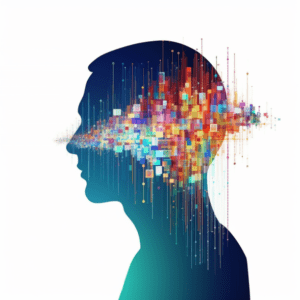Introduction to Machine Learning

Introduction to Machine Learning
Definition of ML
"Machine learning is a subfield of artificial intelligence that enables computer systems to learn and improve from experience, without being explicitly programmed." It is based on the idea that machines can learn from data, identify patterns and make predictions or decisions, without human intervention. Machine learning has gained popularity in recent years, as it has shown great potential in solving complex problems and making intelligent decisions in various industries, such as finance, healthcare, transportation, and e-commerce. This article provides an in-depth introduction to machine learning, discussing its key concepts, types, and applications.
Key Concepts of Machine Learning
Machine learning is based on several key concepts, including supervised learning, unsupervised learning, reinforcement learning, and deep learning. Supervised learning involves training a model using labeled data, where the algorithm learns to identify patterns and make predictions based on inputs and outputs. Unsupervised learning involves training a model using unlabeled data, where the algorithm learns to identify patterns and group similar data points. Reinforcement learning involves training a model to make decisions based on feedback from the environment, and deep learning involves training neural networks with multiple layers to learn and represent complex patterns.
Applications of Machine Learning
Machine learning has a wide range of applications, including predictive analytics, natural language processing, computer vision, fraud detection, recommendation systems, and autonomous vehicles. In predictive analytics, machine learning is used to analyze historical data and make predictions about future events. In natural language processing, machine learning is used to enable computers to understand and interpret human language. In computer vision, machine learning is used to enable computers to recognize and interpret images and videos. In fraud detection, machine learning is used to detect fraudulent behavior in financial transactions. In recommendation systems, machine learning is used to recommend products or services to users based on their preferences. In autonomous vehicles, machine learning is used to enable cars to make intelligent decisions and navigate safely on roads.
Challenges of Machine Learning
Despite its potential, machine learning still faces several challenges, including data quality, bias, overfitting, and interpretability. Data quality is a critical factor in machine learning, as models can only learn from data that is accurate, relevant, and representative. Bias is another challenge, as models can learn biased patterns from historical data, leading to unfair or discriminatory outcomes. Overfitting is a common challenge in machine learning, where models learn from noise or irrelevant features in the data, leading to poor generalization performance. Interpretability is also a challenge, as complex machine learning models can be difficult to interpret and explain to humans.
Summary
Machine learning is a powerful tool that can enable computers to learn from data, make intelligent decisions, and solve complex problems. It has a wide range of applications in various industries, and its potential is only limited by the quality of data and the ability to overcome challenges such as bias, overfitting, and interpretability. As machine learning continues to advance, it is important to ensure that it is used ethically and responsibly, to avoid negative outcomes and promote a better future for all.
Types of Machine Learning
Machine learning can be classified into three types, based on the learning approach: supervised learning, unsupervised learning, and reinforcement learning. Supervised learning involves training a model using labeled data, where the algorithm learns to predict outputs based on inputs. Unsupervised learning involves training a model using unlabeled data, where the algorithm learns to group similar data points based on patterns. Reinforcement learning involves training a model to make decisions based on feedback from the environment, where the model receives rewards or penalties for its actions.


Leave a Reply